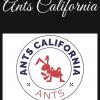- Formiculture.com
- Forums
- Gallery
- Members
- Member Map
- Chat

Pheidole gilvescens
Started By
jeffpbalderston
, Jun 10 2024 5:48 PM
4 replies to this topic
#1
 Offline
-
Posted June 10 2024 - 5:48 PM
Offline
-
Posted June 10 2024 - 5:48 PM
Looking for some again this year!
Antimidation
#2
 Offline
-
Posted June 10 2024 - 6:07 PM
Offline
-
Posted June 10 2024 - 6:07 PM
Yess, always wanted Pheidole! Unfortunately where I live (British Columbia) there is only a few species, the only native one being Pheidole californica. Weird...you'd think the name would mean it comes from California. Maybe also found there?
- bmb1bee likes this
Manica invidia (1 queen, ~200 workers)
Manica invidia (1 colonies, 1 queens plus 3 workers)
Lasius niger (single queen, ~200 workers - naturalistic, predatory set-up)
Lasius americanus (1 colony, ~10 workers)
Tetramorium immigrans (3 colonies, 3 queens, ~ five workers each | 1 colony, 1 queen, ~1200 workers)
Formica aserva (aserva queen, ~15 Formica neorufibarbis workers)
"And God made...everything that creeps on the ground according to its kind.
And God saw that it was good." - Genesis 1:25
#3
 Offline
-
Posted June 10 2024 - 10:53 PM
Offline
-
Posted June 10 2024 - 10:53 PM
Pheidole californica Mayr, 1870, described from California... They were named after the state - with the majority of P. californica records originating from California. Ants don't really believe in boarders... ![]()
Edited by ReignofRage, June 10 2024 - 10:53 PM.
- jeffpbalderston, ZTYguy and Stubyvast like this
#4
 Offline
-
Posted June 11 2024 - 2:39 PM
Offline
-
Posted June 11 2024 - 2:39 PM
Pheidole californica Mayr, 1870, described from California... They were named after the state - with the majority of P. californica records originating from California. Ants don't really believe in boarders...
They are definitely not really good about reading the literature.
- ReignofRage likes this
#5
 Offline
-
Posted June 11 2024 - 4:58 PM
Offline
-
Posted June 11 2024 - 4:58 PM
aha makes sense. Weird naming convention though...I mean, californica...they don't just live in California haha
Manica invidia (1 queen, ~200 workers)
Manica invidia (1 colonies, 1 queens plus 3 workers)
Lasius niger (single queen, ~200 workers - naturalistic, predatory set-up)
Lasius americanus (1 colony, ~10 workers)
Tetramorium immigrans (3 colonies, 3 queens, ~ five workers each | 1 colony, 1 queen, ~1200 workers)
Formica aserva (aserva queen, ~15 Formica neorufibarbis workers)
"And God made...everything that creeps on the ground according to its kind.
And God saw that it was good." - Genesis 1:25
1 user(s) are reading this topic
0 members, 1 guests, 0 anonymous users














